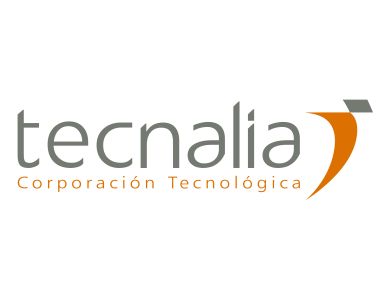TECNALIA RESEARCH & INNOVATION is a private, independent, non-profit applied research centre of international excellence. Legally a Foundation, TECNALIA is the leading private and independent research and technology organization in Spain and one of the largest in Europe, employing 1,400 people people (225 PhDs) and with income of 105.2 Million € in 2017.
The whole team at TECNALIA has one GOAL: to transform knowledge into GDP, meaning wealth to improve people’s quality of life by generating business opportunities for industry. TECNALIA is committed to generate major impacts in economic terms, by means of innovation and technological development, addressed by 6 business divisions covering the economic sectors of Energy, Environment, Industry, Transport, Construction, Health and ICT. TECNALIA has been granted 396 patents and promoted more than 30 spin-off companies.
TECNALIA is a key agent in the ERA – European Research Area, holding position 11th among RECs and 23th overall in EC’s 7th FP7 Monitoring Report (Final). TECNALIA actively participates in the governing bodies of several European Technology Platforms and partners in 377 FP7 projects, coordinating 81 of them; in H2020 TECNALIA participates in 86 projects, coordinating 17 of them, up to the end of 2015. TECNALIA is a member of EARTO and of EUROTECH, linking together the most important research centres in Europe.
TECNALIA has also key alliances with the main EU research centres through the EUROTECH, EARTO, JIIP, and ERANET AERTO. Tecnalia belongs to the previous Artemis-JU Steering Board, and now ECSEL-JU Board, and belongs to PPP-CYBERSEC, PPP-Green Vehicles, PPP-5G, PPP-BDV, PPP-FoF, PPP-Robotics, AIOTI Association, IDS Association, and SEF – Stakeholder Engagement Forum on Micro & Nanoelectronics, EARPA and ERTICO.
TECNALIA Ventures is wholly owned subsidiary for the commercialization of innovative technology-based results, turning innovative technology assets into new profitable and sustainable businesses and generating economic value for society. TECNALIA Ventures focuses on accelerating the development of disruptive technologies to transform them into investable business opportunities and managing the portfolio of TECNALIA spin-offs, currently integrated by a portfolio of 15 start-ups in a wide range of sectors. The University of the Basque Country (EHU/UPV), TECNALIA and Donostia International Physics Centre (DIPC) are the founding members of EUSKAMPUS (2010), a project with attained the qualification of International Campus of Excellence from the Spanish Ministry of Education (2010). Euskampus partners with the PRES of the Universities of Bordeaux in the Euskampus-Bordeaux Transborder Campus.
TECNALIA is an equal opportunity employer. Current ratio of female/male employees is 44/56.The current proposal will be carried out by the AUTOMOTIVE Business Area.

Located in Derio Bizkaia, Spain
Visit the Website
TECNALIA mainly going to contribute in the emission, energy management/thermal management framework, concretely the task; Design of the new simulation platform for vehicle components.
Additionally is TECNALIA going to participate in the future powertrains for heavy duty vehicles, concretely participating in; Connected vehicles, working on an advanced connected predictive information platform (in the cloud), which can deliver static data (topology, speed limits, charging locations, etc.), learned data (driver and vehicle behaviours) and dynamic data (speed limit changes, traffic flows, construction sites, incidents, local weather, charging infrastructure availability, etc.), that serve as inputs for the control algorithms that can minimize the emissions by optimizing: (1) the route choice, (2) the driving profile, (3) the energy management, i.e., the power split between the electric and the thermal powertrain, (4) the accessory load operation, (5) the battery charging, etc, for hybrid vehicles.
Last is TECNALIA going to integrate in advanced solutions such as: a) Driving Operating modes, b) algorithms dynamic and connected with the HCM where the Energy Management System (EMS) will continuously change in function of the traffic, routing and vehicle conditions, c) new HCM algorithms (working together with the new EMS, which will offer a wide range of control possibilities and therefore new modes of operation of the coach, which will make it possible to improve the energy consumption, the driving range, the operational time, and to reduce the emissions levels), d) Electrical architecture for hybrid powertrain.